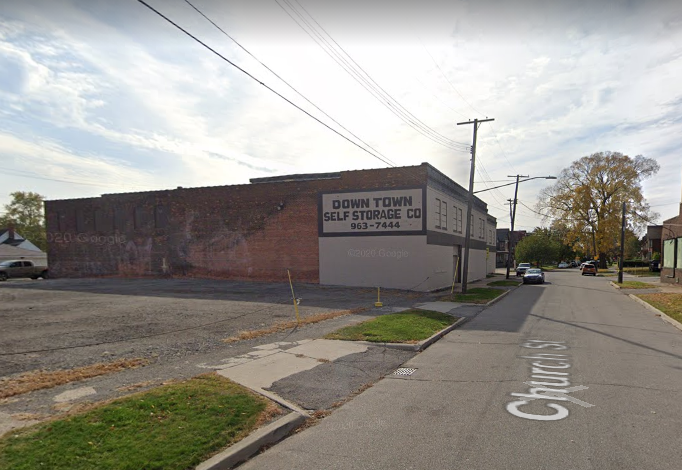The Community Benefits Ordinance process is nearing completion for Michigan and Church, a development that will bring 188 apartments, seven townhouses, and a large parking structure to Corktown. At a meeting on April 29, the Neighborhood Advisory Council (NAC) presented their impact list to a representative from the developer, Oxford Perennial. The development team has until May 3 to respond to the concerns of the NAC.
A major concern from the NAC is saving the warehouse at Church and 10th Street. The historic structure dates back to 1894. The original plan calls for demolishing the building; the developers have since said they'd save some of it. The NAC requested that the building be rehabilitated for reuse, that the developer commits to 401 parking spots in a garage, not surface parking; and that there's an acknowledgment of the history of the site.

Housing affordability is also a priority. Currently, the development will have 20% of the units at 80% of the area median income (AMI). AMI is not solely Detroit; it includes some suburbs, which increases the overall income. In order to meet the needs of the community, the NAC requested that 5% of the units reserved for 60% AMI and 5% at 40% AMI.
Traffic and safety items were also presented. Residents are concerned that there will be increased traffic on residential streets; they'd like to see the garage exit on main roads instead of into residential streets. To enhance walkability, the NAC requested that alleys should be green alleys, and more protected bike lanes should be supported in the neighborhood.
The NAC also cited environmental elements the developer should consider, including LEED certification, sustainable design elements, and using the Property Assessed Clean Energy (PACE) Program for funding some of these requests. A representative from Green Portfolio Solutions was on-hand to engage with the developer to discuss PACE funding.
Additional items requested by the NAC include maintaining or enhancing the neighborhood character, construction mitigation, parking, supporting the neighborhood in retail and workforce, and a number of community investments to improve the neighborhood.
The Community Benefits Ordinance comes into play when a development is over $75 million and the developer is seeking at least $1 million in tax abatement or the developer receives more than $1 million in value of city land. The last Community Benefits meeting will be May 13, where an agreement will be finalized to be presented to city council. Meeting and additional information can be found here.







